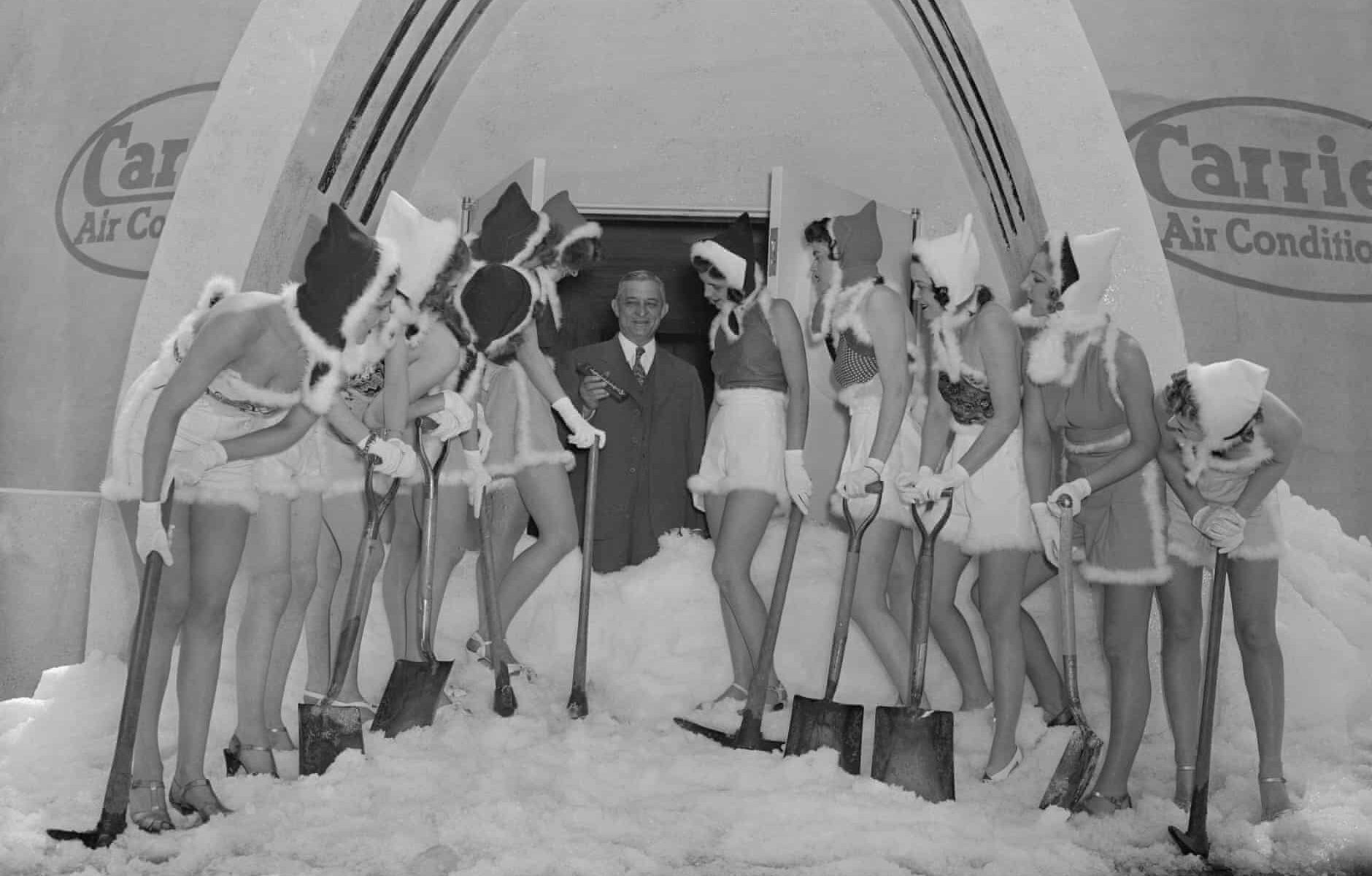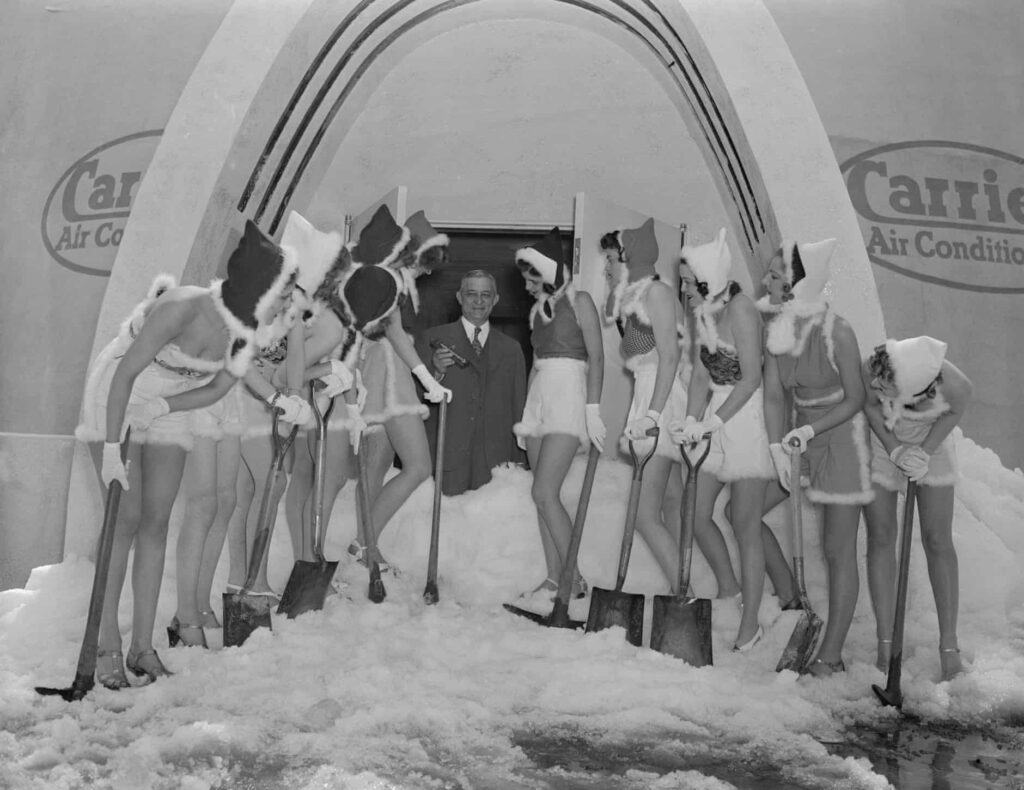
Did you know that air conditioners and fridges create lots of greenhouse gases and also consume lots of energy? Drawdown ranks the cooling (mainly airco) as no. 1 in their list of over 100 projects having impact on stopping climate change.
Source: Drawdown (2017)
The market of cooling yourself down
In the United States the amount of electricity used to keep buildings cool is equal to what the whole continent of Africa uses, for everything. The Chinese offices using air cooling grew in 1 decade from 7 to 95%. They will beat the USA. (source: Drawdown, 2017)
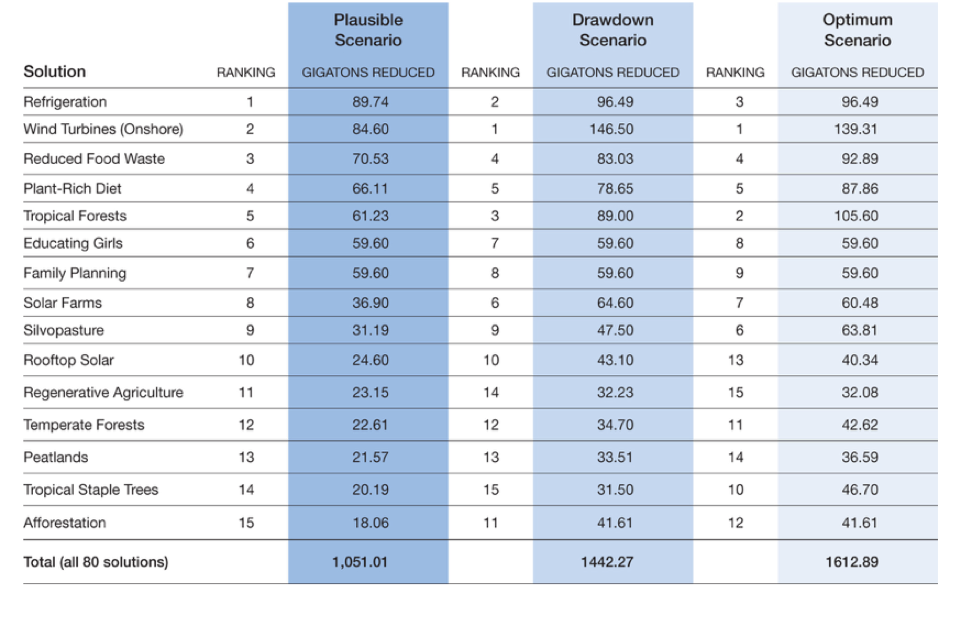
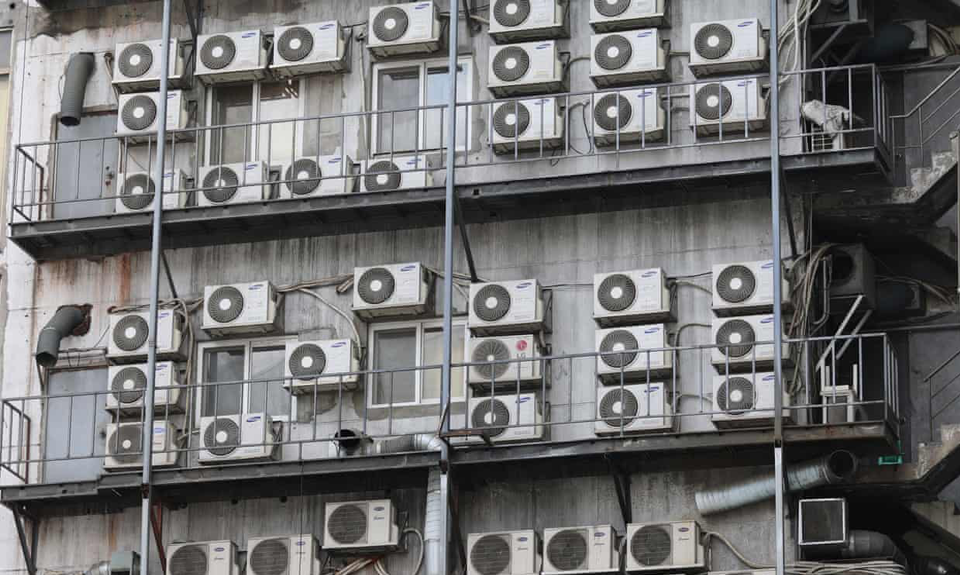
“Last year in Beijing, during a heatwave, 50% of the power capacity was going to air conditioning,” says John Dulac, of the International Energy Agency (IEA). “These are ‘oh shit’ moments.”
There are just over 1 billion single-room air conditioning units in the world right now – about one for every seven people on earth. By 2050 there are likely to be more than 4.5 billion, making them as widespread as the mobile phone is today.
The scale of the impact to climate change
The International Energy Agency projects that as the rest of the world reaches similar levels, air conditioning will use about 13 percent of all electricity worldwide. It will also produce 2 billion tons of CO2 a year. This is about the same amount as India, the world’s third-largest polluter, emits today.
The HFCs (HydroFluorCarbons), the gas in the ‘cooling fluid’ of the cooling units, worsen the problem. According to the IEA, these emissions will increase to 7-19 percent of all greenhouse gas emissions by 2050 if nothing is done to prevent this.(source: rolling stone, see below).
The scale of the impact to green house and global warming is getting immense.
The alternatives
Best is to rethink. First: to not use air conditioners. There are good alternatives. But in specific situations, you simply need good air conditioning. Systems based on the evaporation of water seem to be best. For example, Dutch Climate Systems makes “Icecube” which replaces airco units with radical energy savings and without harmful refrigerants.

The better alternatives
For cities the most low-tech solution is planting more trees. Architects rediscover nature and start designing with shade. They use sunlight, without direct sunlight that would heat a room. Also, they use natural windflows and use better building materials. Some find inspiration in termite mounds, beehives, and other things that exist in the wild.
Inspiring example of a sustainable building, including natural heating and cooling: the Energy Academy Europe in Groningen (Netherlands)
The best alternatives on Ya
Ya is fully insulated and this saves us an airco, even in the tropics.
If it is really hot, we splash water over our deck and over the solar panels to keep them cool. We invent more shaded places, have a swim.
And.. we use fans.
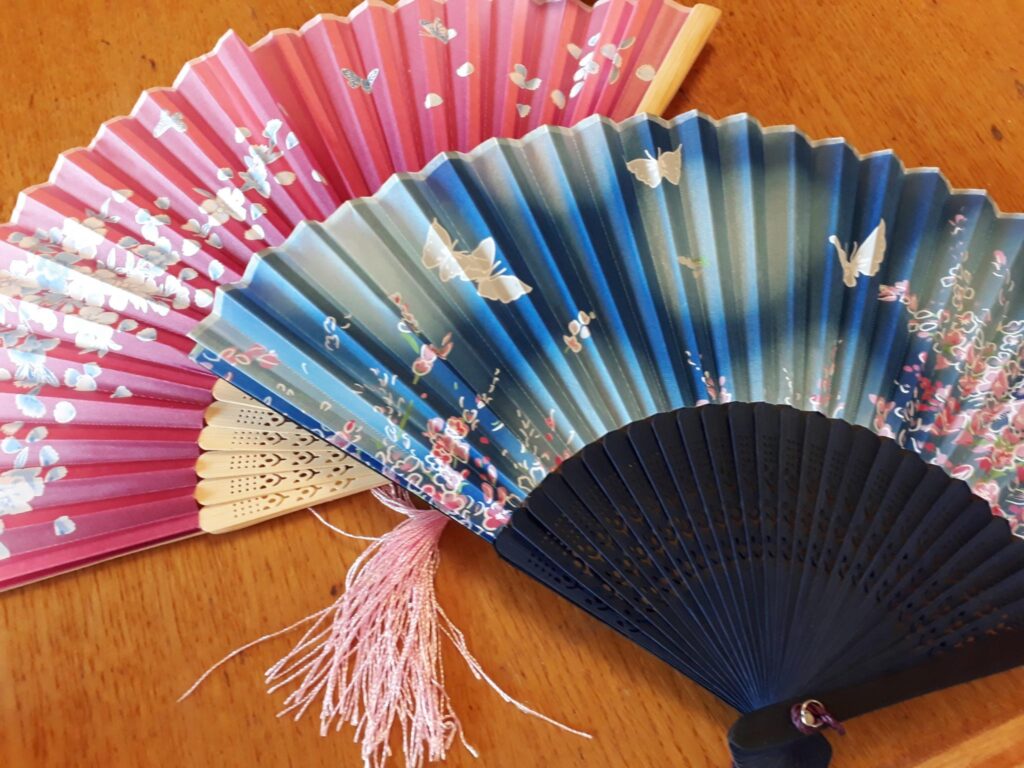
Did you know that electric fans reduce demand for electricity by 30 times compared with traditional AC units? “if people under 65] were to switch from air conditioning to fan (…) this would yield a 59 percent reduction in global HFK emissions and a 9 percent reduction in global CO2 emissions.” (source Rolling Stone). Imagine the reduction can be even more if you use the super- efficient computer fans we use on Ya!
Sources, and for further reading/watching
https://www.cnbc.com/video/2021/07/24/air-conditioning-major-contributor-to-climate-change.html
https://www.theguardian.com/environment/2021/jul/25/air-conditioning-climate-crisis-global-heating
https://campus.groningen.nl/en/onderzoek/topinstituten-proeftuinen/energy-academy-europe
After Cooling: On Freon, Global Warming, and the Terrible Cost of Comfort (Eric Dean Wilson, 2021)

